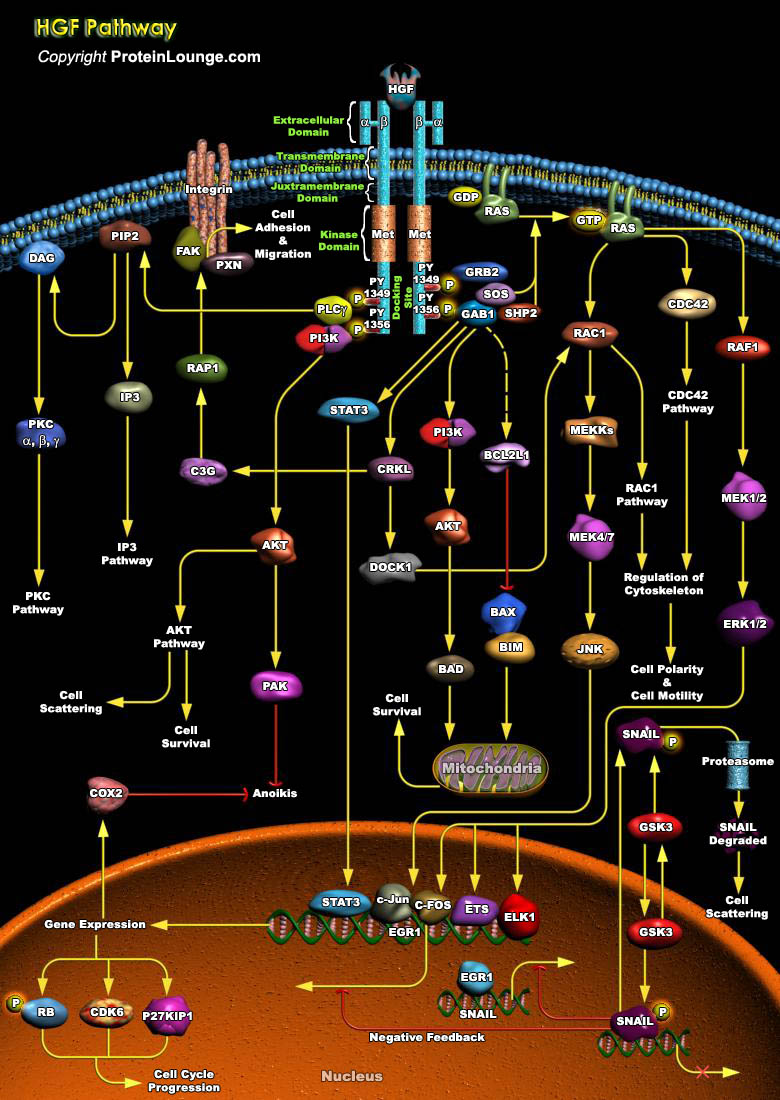
HGF (Hepatocyte Growth Factor)/SF (Scatter Factor) is a mesenchymal- or stromal-derived multipotent heparan sulfate-binding and dermatan sulfate-binding pleiotropic polypeptide that mediates epithelial-mesenchymal interactions with mitogenic, motogenic and morphogenic activities towards many normal and neoplastic epithelial cells. Initially identified as a potent hepatotrophic factor responsible for vigorous regeneration of the liver, it has now become a well characterized multipotent cytokine with biological functions that reach far beyond the original identifications, operating in virtually every tissue of the body, the cellular targets being the hepatocytes and other epithelial cells, melanocytes, endothelial and haematopoietic cells (Ref.1). During embryogenesis,[..]
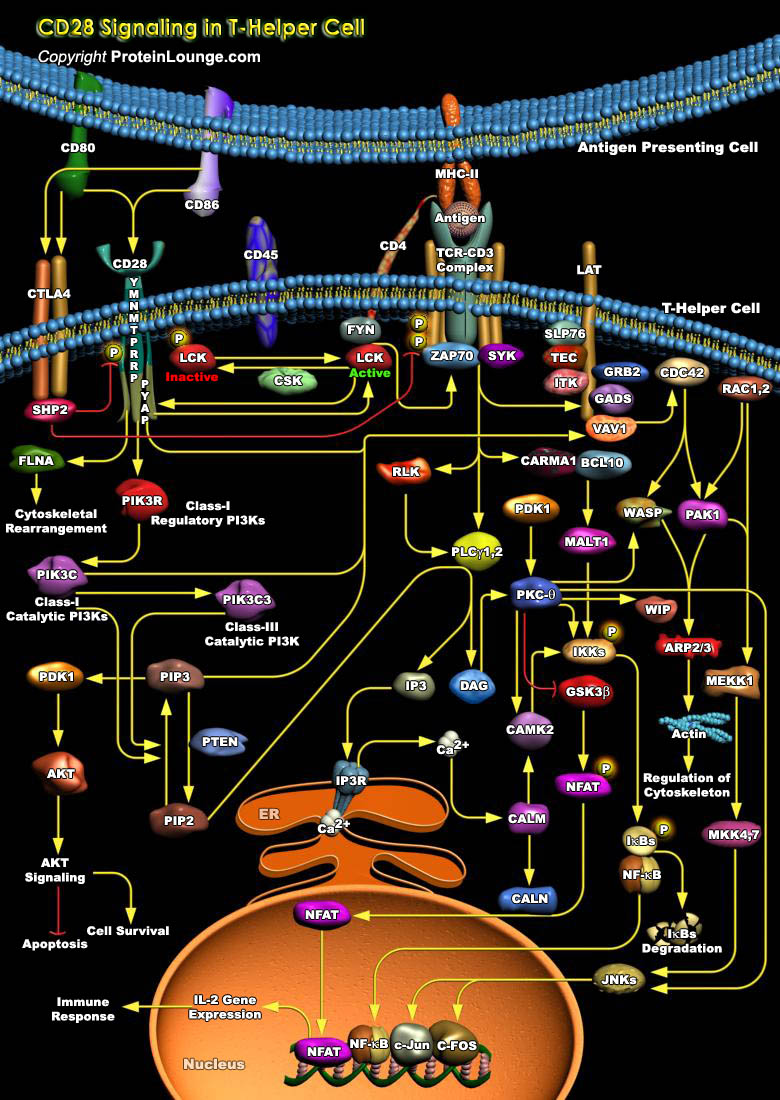
CD28 (Antigen CD28) is characterized as a co-receptor for the TCR (T-Cell Receptor)/CD3 (CD3 Antigen) complex and is responsible for providing the co-stimulatory signal required for T-cell activation. CD28 also act as a receptor independent of the TCR and can initiate signaling events without concomitant TCR ligation. Priming of naive T-cells in lymphoid organs depends on the interaction between CD28, which is constitutively expressed in T-cells, and both CD80 (CD80 Antigen) and CD86 (CD86 Antigen) and induces subsequent IL-2 (Interleukin-2) production and clonal expansion for effective immune response. CD28 is a major positive co-stimulatory molecule required for T-cell activation and functional differentiation, and that CTLA4 (Cytotoxic T-Lymphocyte Antigen-4) upon[..]
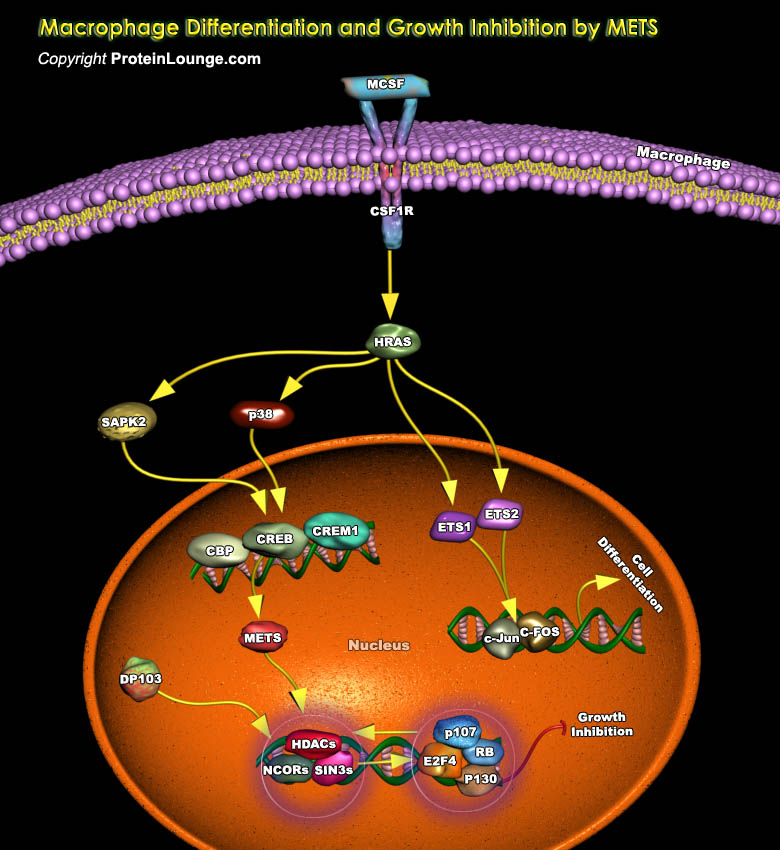
Cell differentiation begins only when the cell proliferation mechanism is seized, and the macrophage differentiation system is a good example, as the macrophages start to differentiate only when they stop proliferating. Molecular mechanisms which act coordinately in order to regulate cell proliferation and differentiation are vital in development. Induction of Ets (v-Ets Avian Erythroblastosis Virus E26 Oncogene Homolog) repressor that is METS (Mitogenic Ets Transcriptional Suppressor) leads to terminal differentiation and cell cycle arrest (Ref.1). Macrophages are models, which provide evidence that METS blocks HRas (v-Ha-Ras Harvey Rat Sarcoma Viral Oncogene Homolog)-dependent proliferation without inhibiting HRas-dependent expression of cell type-specific[..]
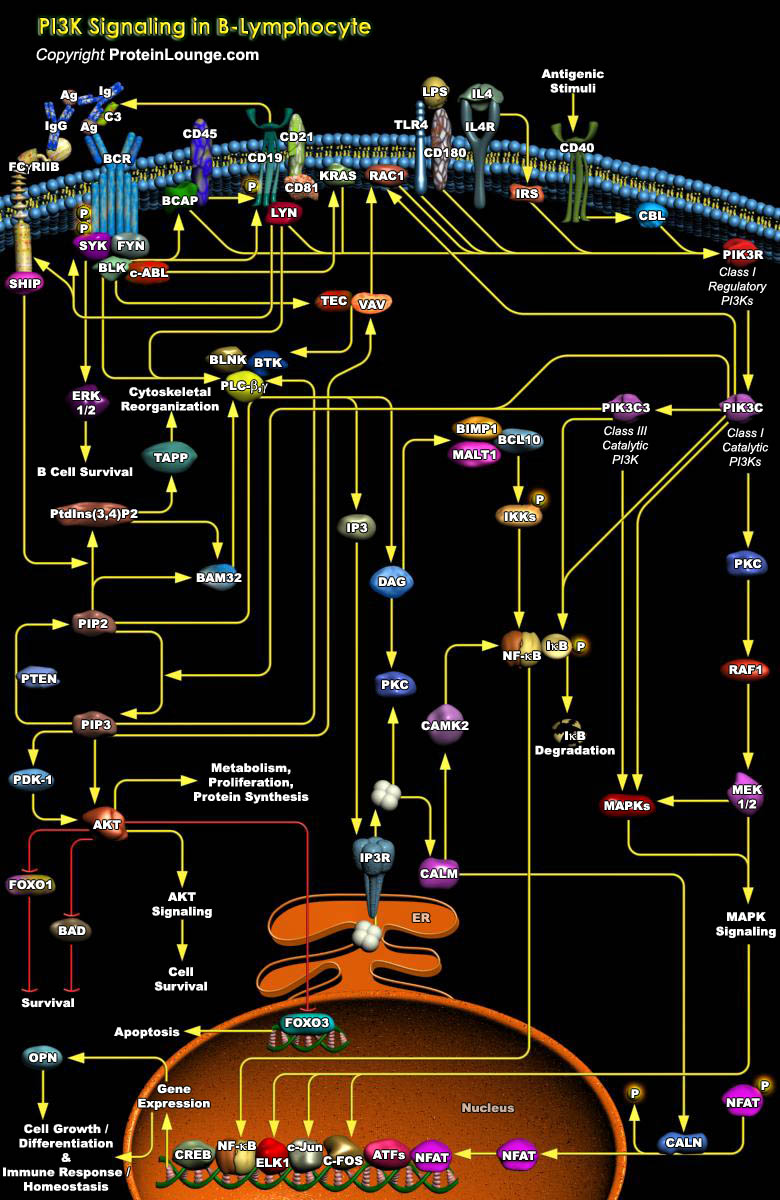
PI3Ks (Phosphoinositide-3-Kinases) regulate numerous biological processes, including cell growth, differentiation, survival, proliferation, migration and metabolism. In the immune system, impaired PI3K signaling leads to immunodeficiency, whereas unrestrained PI3K signaling contributes to autoimmunity and Leukemia. The Class I and III PI3Ks basically facilitate B-cell development through defined stages, resulting in at least three distinct lineages of mature B-lymphocytes. In B-cells, PI3K is activated within seconds of antigen-receptor triggering. The BCR (B-Cell antigen Receptor) plays a critical role in recognition of antigens and activation of B-cells. The BCR or mIg (Membrane Immunoglobulin) is associated with Ig-Alpha/CD79A (CD79A Antigen) and Ig-Beta/CD79B[..]

During immune response, T-cells are optimally activated in secondary lymphoid tissues in order to properly migrate into areas of inflamed tissue. Upon antigen recognition via the TCR (T-Cell Receptor)/CD3 (CD3 Antigen) complex, a second co-stimulatory signal from APCs or Antigen-Presenting Cells is necessary for activation of naive T-cells. According to the “Two-Signal Model” for T-cell activation, although the engagement of TCR/CD3 by antigen/MHC (Major Histocompatibility Complex) products is essential for the initial stages of T-cell activation, a second signal termed a co-stimulatory signal is required for clonal expansion and functional differentiation of antigen-specific T-cells. T-cell activation induces co-stimulatory molecules, including the ICOS (Inducible[..]
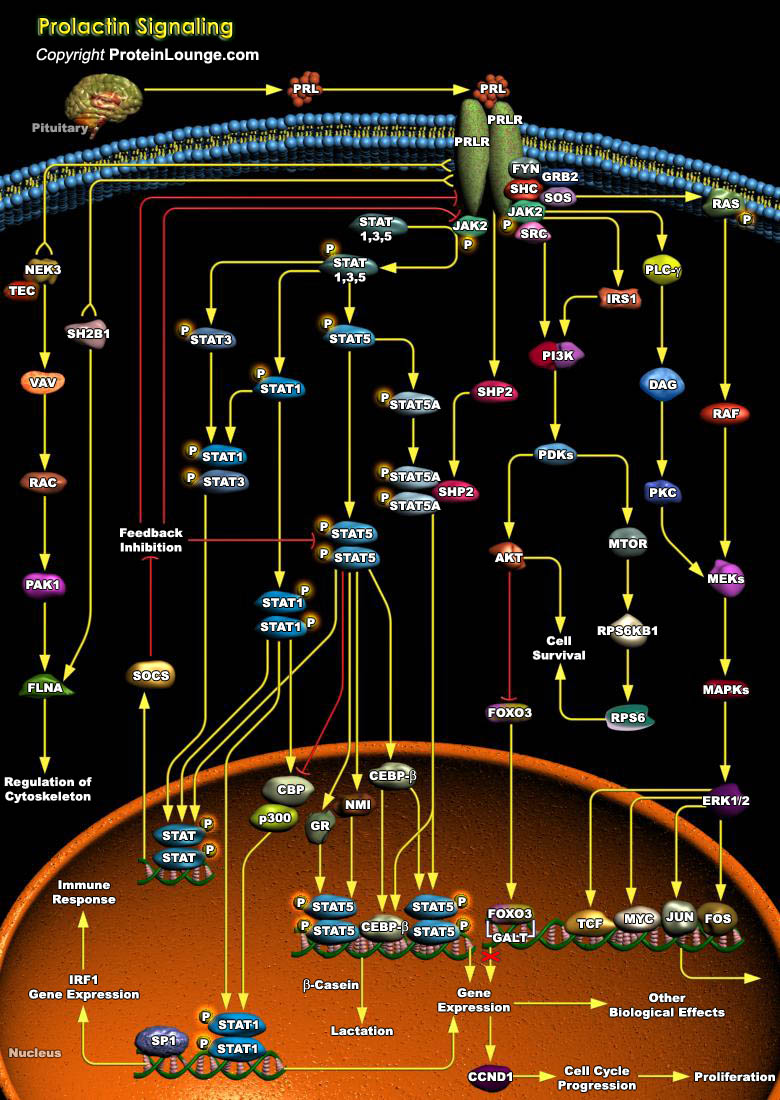
PRL (Prolactin), a multifunctional hormone secreted by the anterior pituitary gland and to a lesser extent by numerous extrapituitary tissues, affects more physiological processes than all other pituitary hormones combined. It was originally identified by its ability to stimulate the development of the mammary gland and lactation. However, this hormone has been established to be present in all vertebrates, and involved in more than 300 separate effects, which can be ascribed to six broad categories: (i) reproduction and lactation, (ii) growth and development, (iii) endocrinology and metabolism, (iv) brain and behaviour, (v) immunomodulation and (vi) osmoregulation. It acts as a pleiotropic cytokine promoting cellular proliferation and differentiation of a variety of[..]
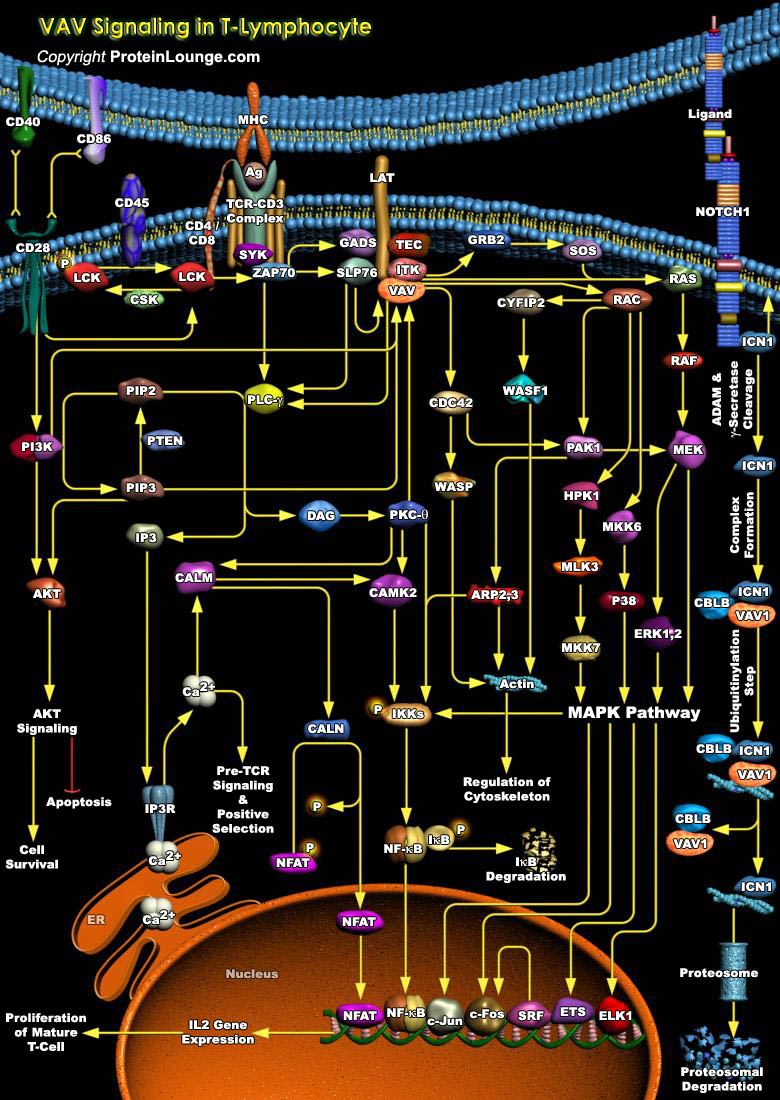
VAV(Oncogene Vav) family of proteins act as GEFs (Guanine Nucleotide Exchange Factors) and activators of Rho family GTPases, and are known to orchestrate cytoskeletal changes and cell migration in response to extracellular stimuli by catalyzing the exchange of GDP for GTP. Of the three mammalian isoforms, Vav1 is primarily expressed in hematopoietic cells, while Vav2 and Vav3 are more ubiquitously expressed. VAV proteins are found in the cytoplasm of resting lymphocytes, and TCR (T Cell Receptor)/CD3 (CD3 Antigen) stimulation cause their translocation to the plasma membrane, presumably because of recruitment to either ZAP70 (Zeta-Chain-Associated Protein Kinase) or to the LAT (Linker for Activation of T-Cells)-SLP76 (SH2 Domain-Containing Leukocyte Protein-76) complex[..]
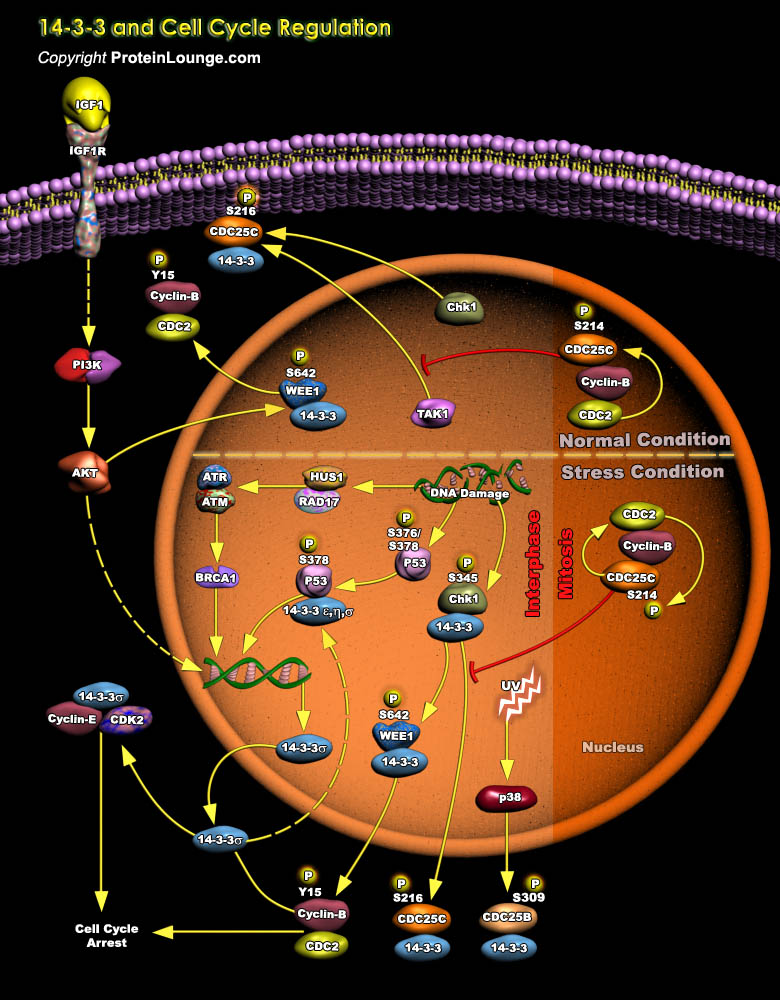
Co-ordinated progression through the cell cycle is essential for the maintenance of genomic integrity. 14-3-3 proteins play particularly important roles in coordinating progression of cells through the cell cycle, regulating their response to DNA damage, and influencing life-death decisions following internal injury or external cytokine-mediated cues. 14-3-3 proteins function at several key points in G1/S- and G2/M-transition by binding to regulatory proteins and modulating their function. The association with 14-3-3 proteins requires a specific phosphorylation of the protein ligand and mediates cell cycle arrest. 14-3-3 binding may lead to cytoplasmic sequestration of the protein ligand but may also have other functional consequences (Ref.1 and 2).14-3-3 proteins[..]
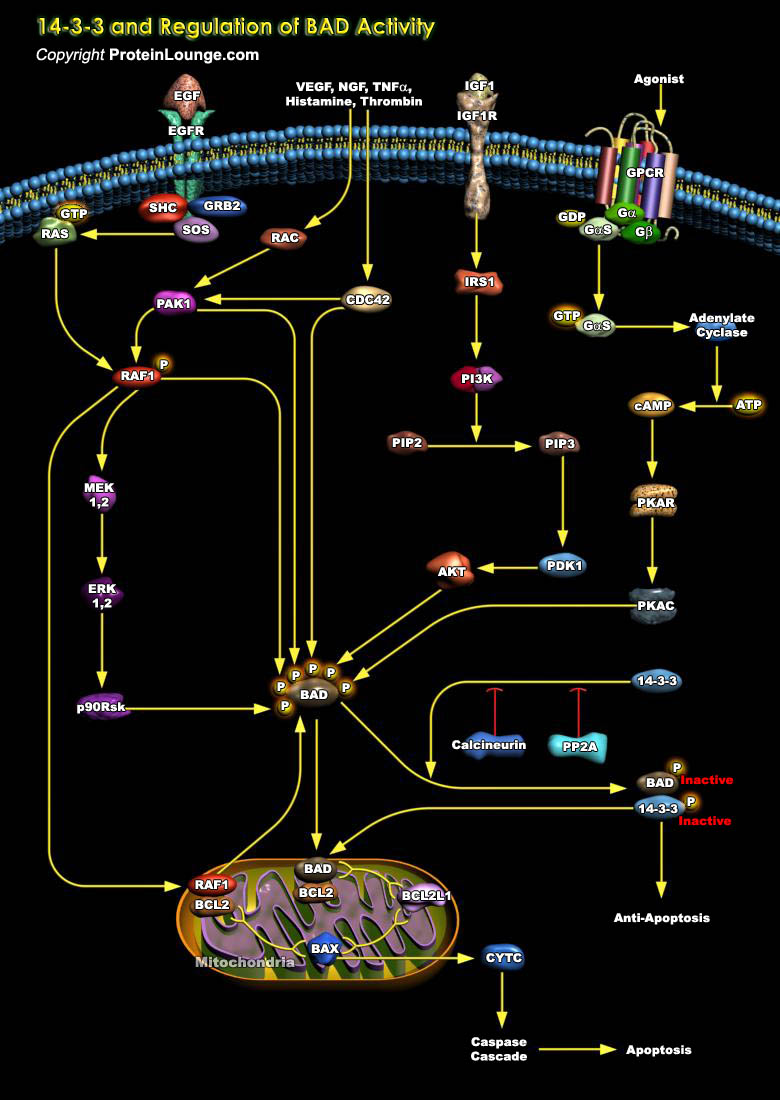
14-3-3 is a phosphoserine/phosphothreonine-binding protein that is being implicated in a wide range of cellular phenomena. 14-3-3 family members are found in all eukaryotes – from plants to mammals – and more than 100 binding partners have been identified to date. They regulate their activities by a number of different mechanisms, which include inter- and intracompartmental sequestration, activation/inactivation of enzymatic activity and promotion/inhibition of protein interactions. The targets of 14-3-3 are found in all sub cellular compartments and their functional diversity is overwhelming – they include transcription factors, biosynthetic enzymes, cytoskeletal proteins, signaling molecules, apoptosis factors and tumor suppressors (Ref.1 & 2).[..]
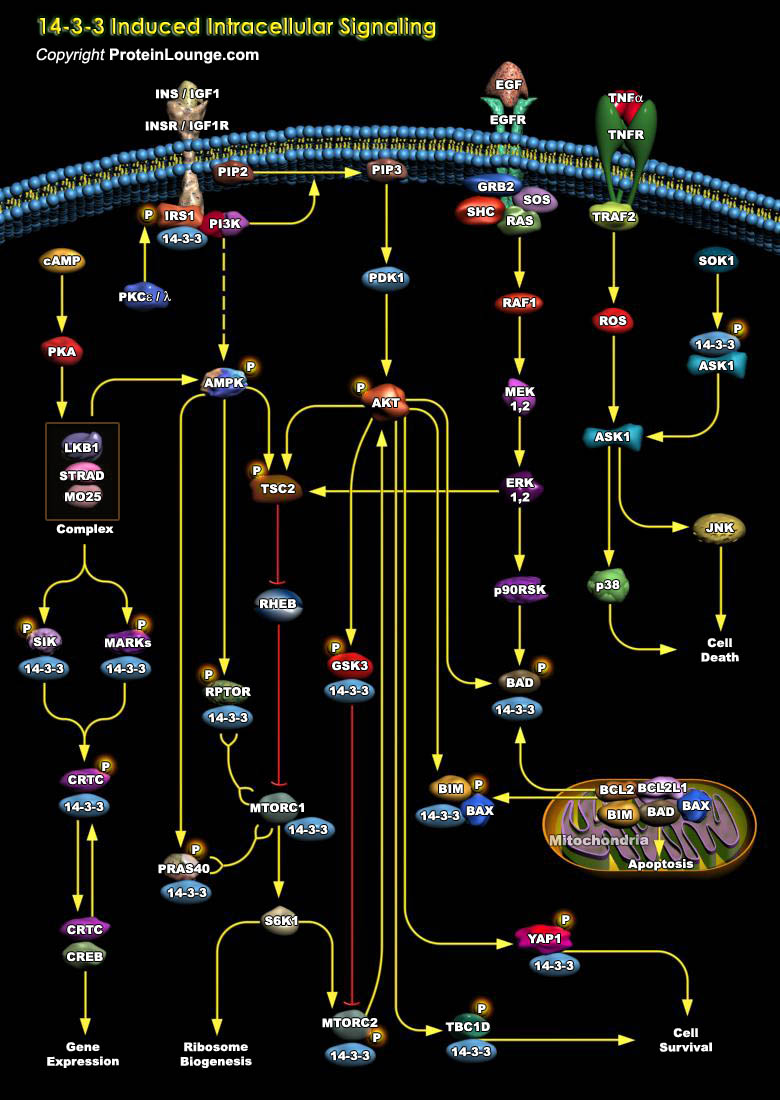
The 14-3-3 family of proteins consists of molecular adaptors that recognize phosphorylated proteins (e.g. kinases, transcription factors and receptors). They are able to coordinate almost limitless combinations of protein complexes, which accounts for their functional diversity (Ref.1). This plethora of interacting proteins allows 14-3-3 to play important roles in a wide range of vital regulatory processes, such as neuronal development, mitogenic signal transduction, apoptotic cell death, cell cycle control, cell growth control, and viral and bacterial pathogenesis. More than 50 signaling proteins have been reported as 14-3-3 ligands (Ref.1). Seven mammalian isoforms of 14-3-3 proteins (α/β, ɛ, η, γ, τ/θ, δ/ζ, σ) have[..]
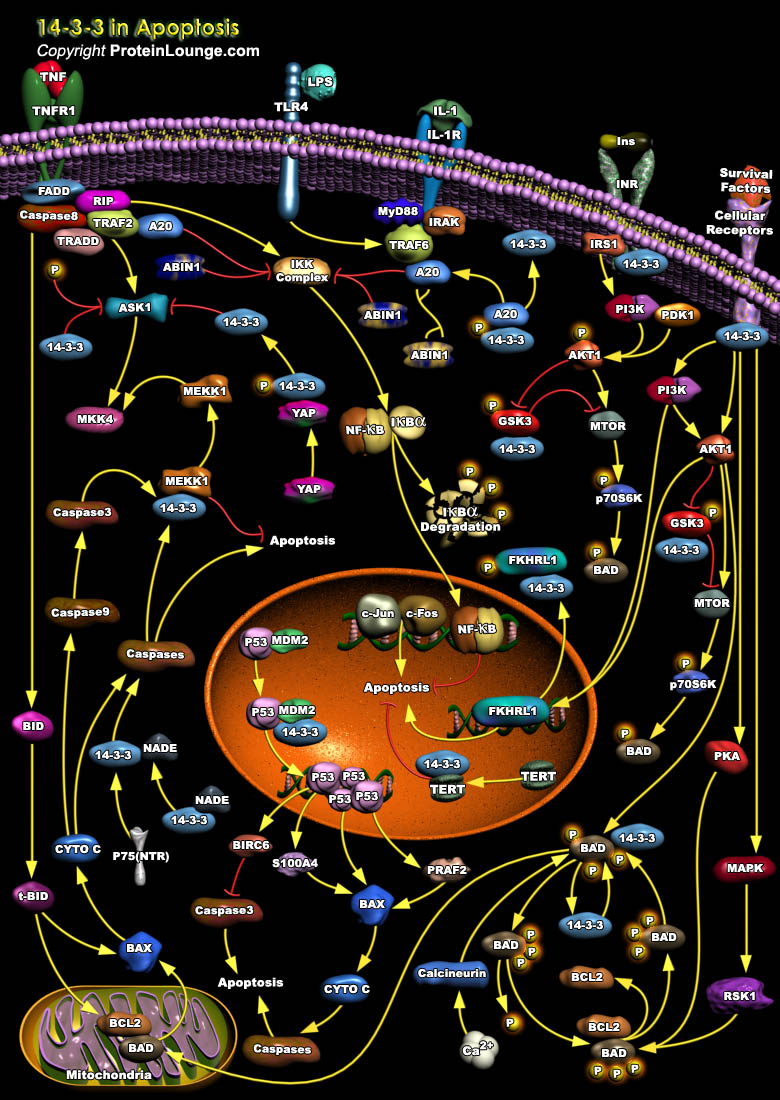
14-3-3 proteins are abundantly expressed adaptor proteins that interact with a vast number of binding partners to regulate their cellular localization and function. They regulate substrate function in a number of ways including protection from dephosphorylation, regulation of enzyme activity, formation of ternary complexes and sequestration. They are key regulators of major cellular processes such as proliferation, differentiation, senescence and apoptosis (Ref.1 and 2). Apoptosis is a physiological process of cell death that plays a critical role in normal development as well as in the pathophysiology of a variety of diseases. The fundamental cellular mechanism behind apoptosis is due to a balance between anti-apoptotic and pro-apoptotic factors, which may be shifted[..]
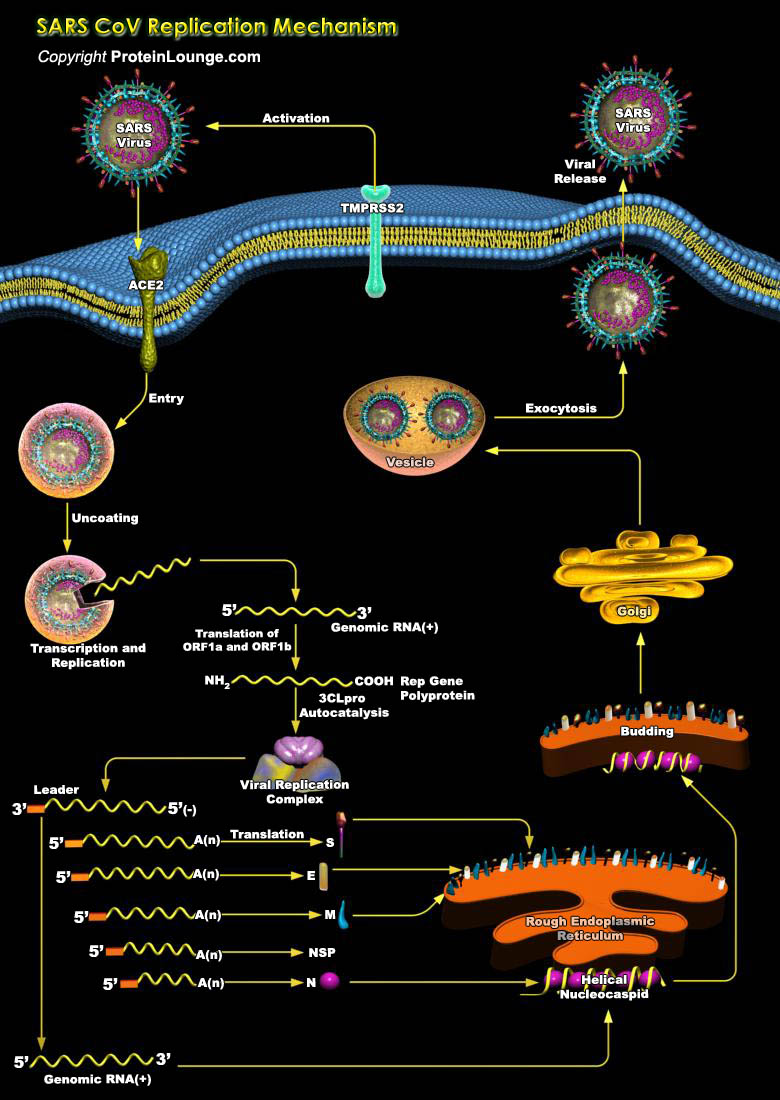
SARS (Severe Acute Respiratory Syndrome) is a newly emerged infection in humans characterized by fever and pneumonia. This disease may progress rapidly to ARDS (Acute Respiratory Distress Syndrome) with considerable morbidity and mortality. It was first identified in the Guandong Province of China in November 2002, and a major outbreak occurred in Hong Kong in March 2003 (Ref.1). Probable cases have been reported in 31 countries, with extensive ongoing transmission in Taiwan and China, continuing transmission in Hong Kong, and major outbreaks that are now under control in Singapore and Vietnam. There are three different phases of SARS, with symptoms including fever, a dry cough, dyspnea (shortness of breath), headache, and hypoxaemia (low blood oxygen concentration).[..]

